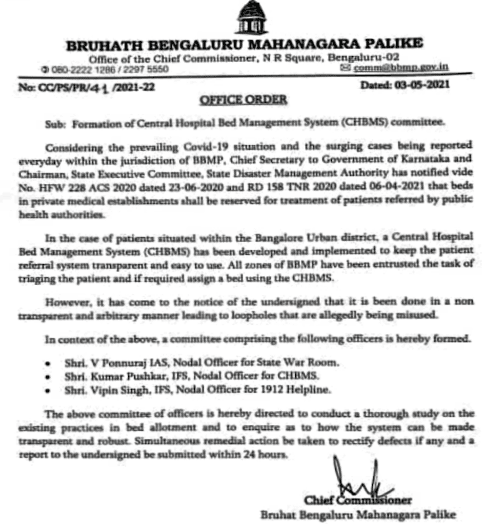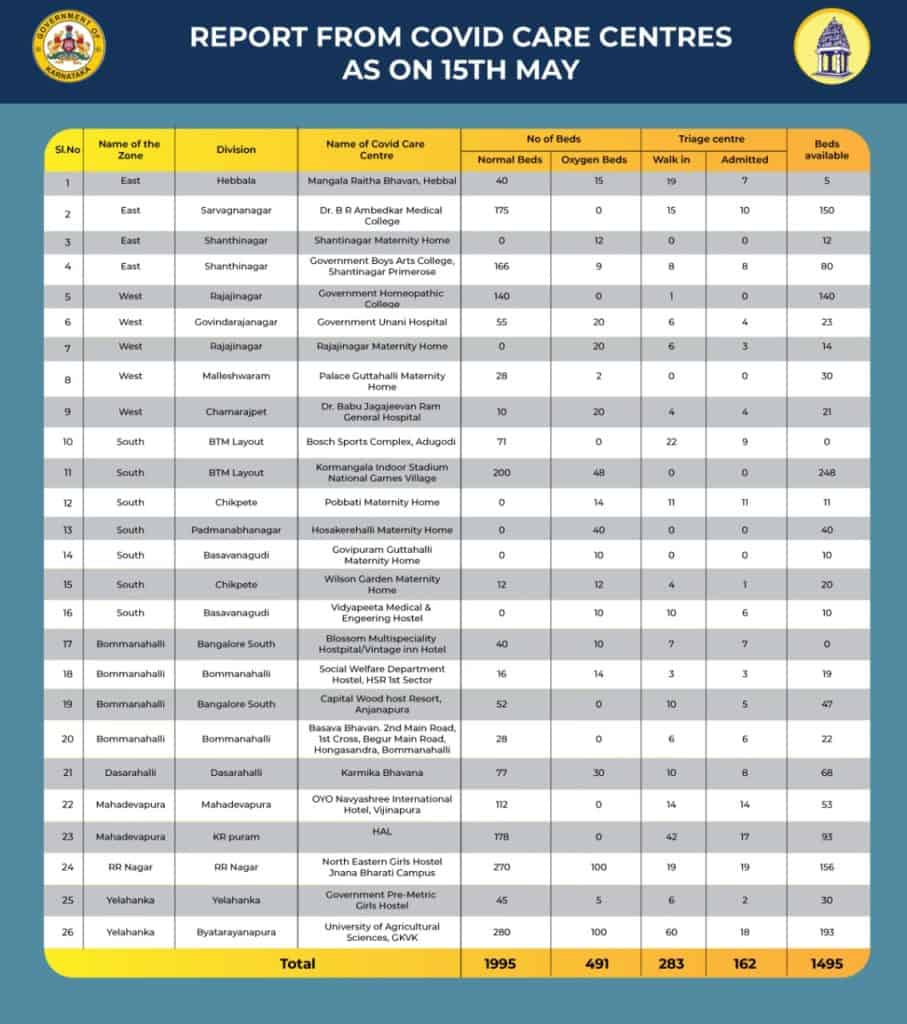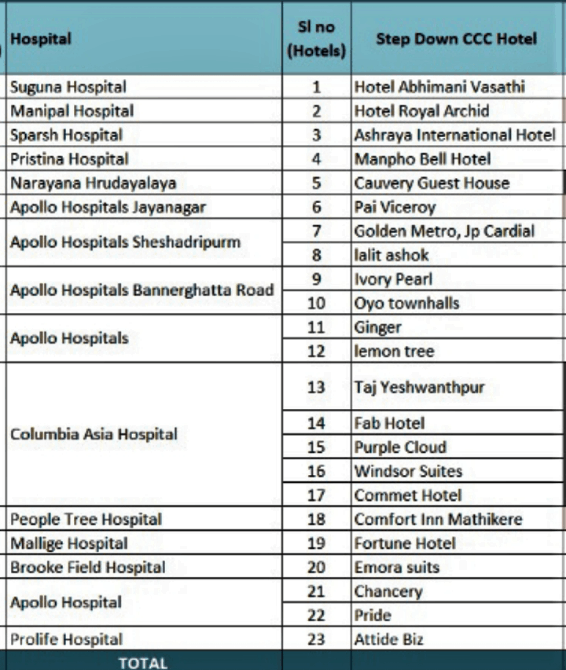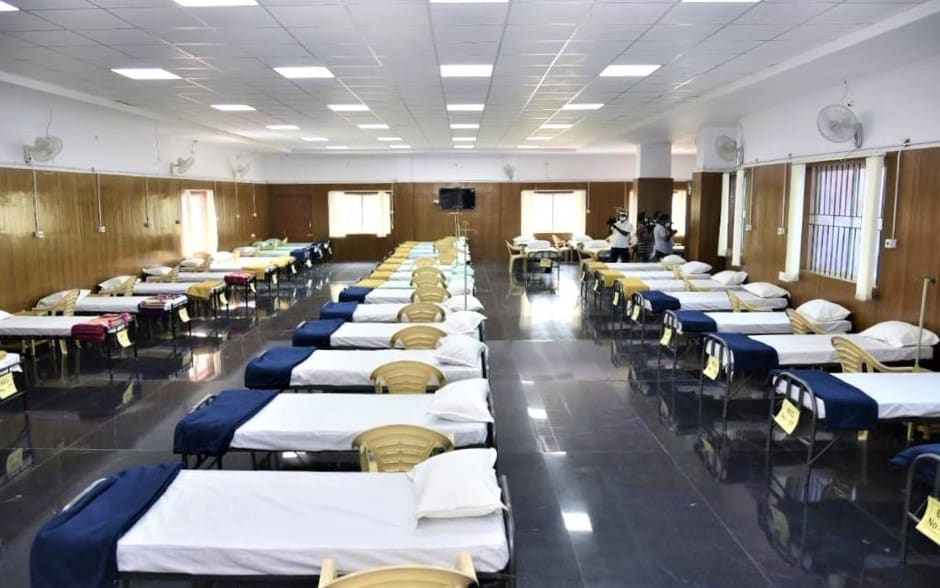Karnataka’s Technical Advisory Committee (TAC), the scientific adviser to the government on COVID management, had predicted a second wave in January and February of 2021. While the TAC’s prediction was off by a couple of months–in UK and USA, the second wave had wreaked havoc in the final months of 2020–they did forewarn the State government that a faster spreading and more debilitating second wave of the pandemic was just waiting to happen.
And it did. In the end April 2021, the State was clocking approximately 50,000 cases per day with capital Bengaluru alone averaging 20,000 cases per day.
The administration had totally ignored the TAC’s ominous predictions. No thought or planning happened to ramp up the infrastructure needed to deal with this second wave. The result, an apocalypse like situation—an acute shortage of drugs, vaccines, oxygen and oxygen beds and media headlines highlighting people dying for want of medicines and hospital treatment.
Read more: COVID bed nightmare: What the govt committee recommends
“My 68-year-old maternal uncle was infected by the virus so I registered him with BBMP’s COVID helpline 1912,” says Srivatsa Vajapeyam, resident of Girinagar. “I was shocked to get a call after 30 hours about bed availability after calling them at least a dozen times in the interim. The next challenge was when his condition got worse at his hospital in Sheshadripuram and we had to move him to an ICU facility. But the Yelahanka Zone war room asked us to try the West Zone war room since the Seshadripuram hospital is part of West Zone. My uncle’s SPO2 levels had dropped to 44 and we were desperate for an ICU. The war room said there was no ICU available, but we somehow managed to get him an ICU ventilator bed through some contacts in a large hospital in South Bengaluru where he continues to be critical but improving. This was a really frightening situation. What do people without networks do? Dying should not be an option.”
Add this horror story to the many other horror stories of sick people being sent back home because the booking by the war room didn’t correlate with the hospital database.
These stories are not being shared to sensationalise or find fault. It is to set the context to discuss the collective efforts of the BBMP, the health care fraternity, experts and citizen groups on what is being done and what needs to be done to save more lives.
Read more: Do Bengaluru’s COVID helplines help?
“DETER” and the 3Es
Dr Giridhar Babu, epidemiologist and member of the State’s Technical COVID Task Force, shares what is most needed to manage this crisis:
“We have been repeating ad nauseam about the severity of the second wave and the importance of the 3Es Bengaluru needs to implement. This is in line with the recent government order on ward level decentralised triage and emergency response (DETER). The 3E’s are Efficient Entry into hospitals (Triage), Efficient Exit (Discharge), and Empowerment of hospitals in each BBMP Ward. This will enable effective and comprehensive management of COVID cases at the Ward level.”
Efficient entry into hospitals should be facilitated by community triage services, Dr Giridhar says. The goal of the Efficient Exit Strategy is to ensure that bed turnaround time is reduced. This is done by ensuring that no person with mild symptoms is admitted to hospital, and people with moderate illness are shifted to CCCs within a few days.
The third-E is to Empower the hospitals, doctors and their management with supportive supervision. The volunteers and members from the ward committee should meet with heads of the hospitals to understand the constraints. Officers and volunteers need to work with the hospitals to help the Aarogya Mitras and ensure that oxygen supplies and other resources reach the hospital.
“Although there has been a delay, it is indeed reassuring to see BBMP ramp up its efforts. We are headed the right way,” Dr Giridhar says.

Several non-government organisations are part of the massive effort required to quell the second wave. “It’s good to see BBMP taking inputs from multiple citizen stakeholder groups including the Public Health Action Task Force (PACT),” says Srinivas Yelandur, co-founder of PACT.
“We had submitted a vision document to BBMP stakeholders that proposed integrating the siloed systems and revamping/integration of deployed technology. The document highlighted the need to address lack of transparency, scalable technologies, decentralised decision making and democratisation of information, real time data and dashboards and to improve efficiency and throughput of BBMP’s capacity in administration. Few other citizen groups have made similar recommendations as well. It was heartening to note on May 3, a three-member committee was set up to drive the necessary changes. So, the government is listening,” said he.

However, many at the ward level seem confused with the recent announcements.
“First, we got a ward-level triage order dated May 7 and on May 11, an order for triage, CCC and hospital for each constituency was released,” says Nandita Subbarao, Ward Committee member form Ward-19. “However, we find that many triage centres are not functioning, so we referred to the list of 11 CCCs, one per zone on average, two in some cases.
There again, not all 11 triage centres are operational, she says, pointing to Mangala Raitha Bhavan in Ward 19 and in the UAS campus. “While the CCC is working, no triage is happening. When will it begin? We don’t know. We need clear communication. For instance, now that we have constituency-level triage, will we have ward-level triage too?” says Nandita.
“Triage and oxygenated CCCs are priority”
Edited excerpts of interview with D Randeep, Special Commissioner for CHBMS

Can you tell us what triage involves?
Triage in medical terms is the assignment of degrees of urgency for illnesses to decide the order of treatment of a large number of patients or casualties. This is very relevant in this pandemic especially since Bengaluru is averaging 20,000 cases a day. We want to ensure that critical patients get priority, proper care and access to HDU and ICU beds.
The triage that has been happening so far is “Tele Triage” via the zonal war rooms. We are now setting up physical triage centres across assembly constituencies, sub-divisions and eventually wards. The level-1 triage units also have oxygen beds in case a person needs to be stabilised. These centres should be a part of the existing health care centres and hospitals. I am happy to share that 26 triage centres are operational now and we hope to have one triage centre per ward soon.

Can a mobile team check the status of a patient at home over a video call before a bed is allocated?
Yes, it’s a wonderful concept and we will try to get this set up with a team of online triage experts.
How many covid care centres are currently operational? What kind of patients are advised to use them?
A Covid Care Centre (CCC) is a facility or space to isolate and treat a COVID positive patient with mild symptoms if he or she doesn’t have the facility to isolate at home.
However, with many people witnessing a fast drop in SPO2 levels, my personal opinion is that the CCC’s should be able to handle cases with oxygen saturation between 85 and 93. However, we will need to issue an advisory in this regard. We have 1000 beds across all the CCC’s and currently, 200 of them are oxygen beds. This number has to be increased and it will be.


Can we add all Covid Care Centres to google maps?
Yes, any citizen efforts in this direction is most welcome.
How and by when do you plan to increase the capacity of HDU and ICU beds? Why are CCC’s not equipped to deal with HDU or ICU requirements already?
We currently book and allocate an average of 250 HDU beds on a given day via the war rooms. ICU beds are few. We are vigorously working towards increasing capacity. The Haj Bhavan CCC which should be operational in the next 2-3 days will have 20 to 25 ICU beds.
We have also set up step-down hospitals wherein hospitals tie up with hotels to onboard patients and 12 of them are now operational. Hospitals will move patients after 4 to 5 days of intense treatment (based on their recovery and progress) to these step-down facilities. These facilities have round the clock medical support, supplies and oxygen. This will in turn help hospitals allocate critical HDU or ICU beds for other patients in need. Large office spaces can also be converted into step-down units and we encourage them to come forward.

The CHBMS portal often does not show real time data and booking doesn’t correlate with bed availability in hospitals.
We are upgrading the portal with the help of experts. Frequent updates by communicating with hospitals and public dashboards with real time data would be made available very soon.
Mayank Natani, a volunteer with software product think tank iSpirt, wrote in a LinkedIn post that iSpirt and eGov Foundation, established by Nandan Nilekani and Srikanth Nadhamuni, have been roped in to revamp the CHBMS. The primary goal here is to make the system more transparent, efficient and eliminate fraud. The new system is expected to handle the daily triaging and categorisation of over 20,000 Covid patients and efficiently allocate 13,800 beds available with the BBMP.
What is the ICU queuing system and where can people view it? Can BBMP also develop a HDU queuing system?
An automated queue system is being implemented by the central war room where each critical patient will be assigned a token number and will be able to track the status of the bed. This is currently being done for ICU and ICU-V (Ventilator) category. I agree it must be done for HDU category too since many patients are experiencing sharp and fast decline.
Can the bed booking process include a confirmation from the hospital so the patient is alerted and transported?
Yes, we need the SAST (Suvarna Arogya Suraksha Trust) and CHBMS systems to interact. Hospitals are upgrading their existing patients’ list based on their condition but the data does not get updated. We should get this sorted out soon. We will also create a mechanism where the patient who has been refused a bed would be put on a priority list for bed allocation.

What message would you like to convey to Bengaluru’s citizens?
Keep monitoring your health and vitals every day if you have tested positive. The early start of medication has been very effective. If you sense a decline in condition, please don’t ignore it. Visit our triage centres. We will help stabilise and find you a bed if required. Help us to help you.
Superb article – very informative. Well balanced views from all parties involved.
Superb article, covers all the ground info and workable suggestions and solutions.